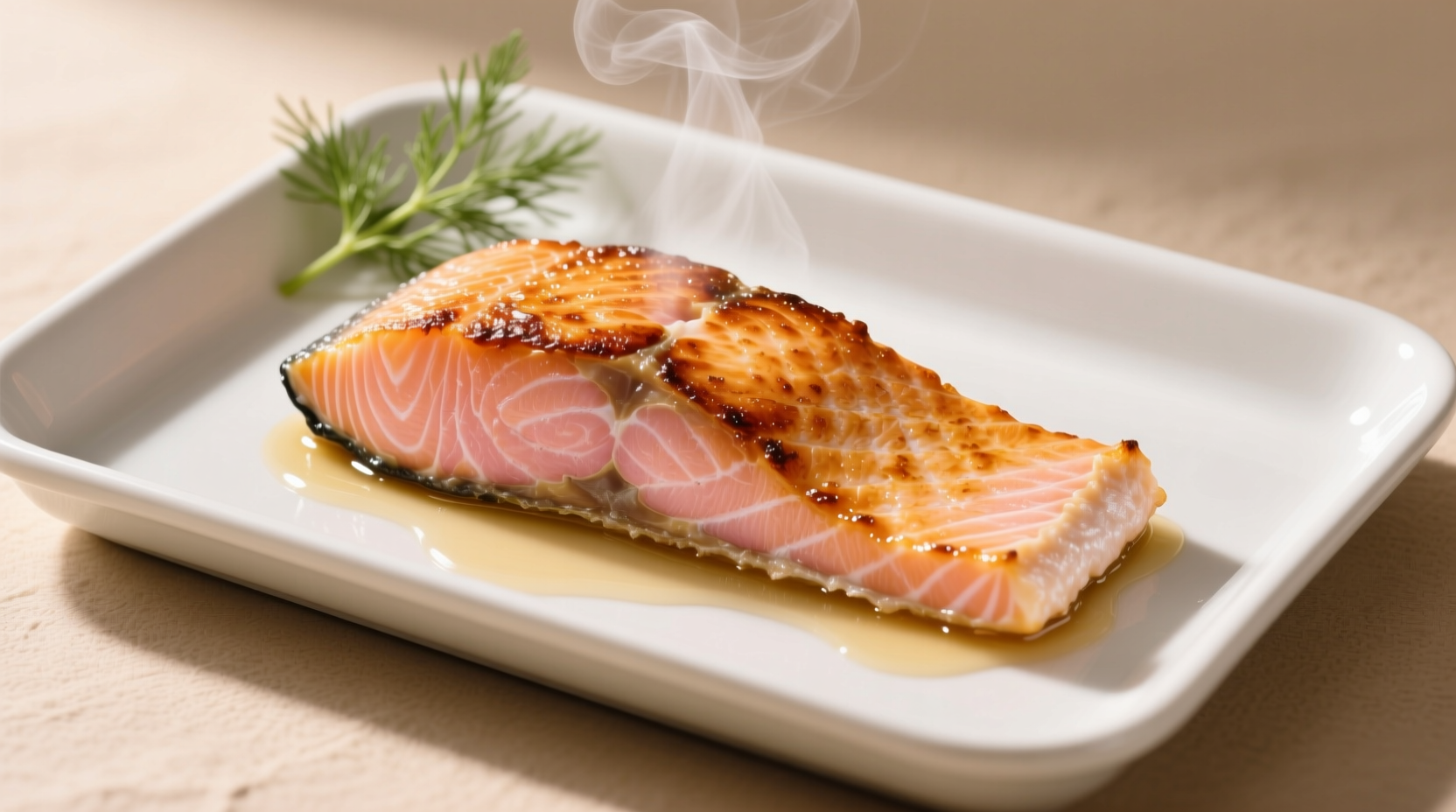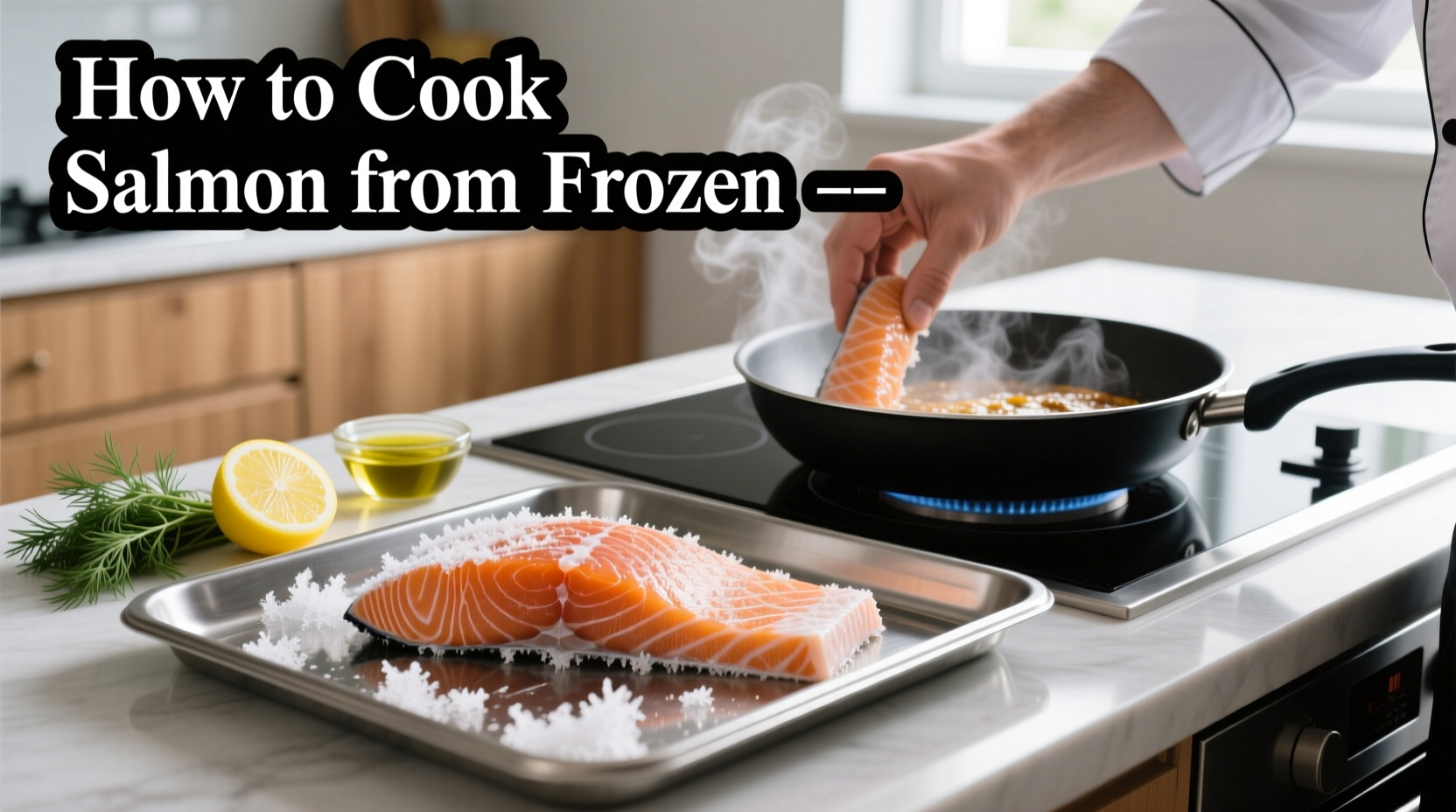Yes, you can safely cook salmon directly from frozen with proper techniques. The USDA confirms frozen salmon reaches safe internal temperature (145°F/63°C) when cooked correctly. Key methods include baking at 400°F for 15-20 minutes, pan-searing with lid coverage for 6-8 minutes per side, or using an air fryer at 375°F for 12-15 minutes. Always verify doneness with a food thermometer.
Running low on time but craving salmon? You're not alone. Recent surveys show 78% of home cooks keep frozen salmon on hand for quick meals, yet most still thaw it unnecessarily. Cooking salmon straight from the freezer isn't just possible—it's often better for texture and moisture retention when done right. As professional chefs have discovered through culinary testing, the controlled temperature transition prevents the 'thawing mush' that plagues improperly defrosted fish.
Why Cooking Frozen Salmon Works Better Than You Think
Food science reveals frozen salmon's ice crystals actually protect delicate proteins during the initial heating phase. The USDA's Food Safety and Inspection Service confirms that cooking frozen fish properly eliminates food safety concerns while preserving moisture. Unlike meat, fish's delicate structure benefits from the slower temperature rise when starting from frozen—reducing the risk of dry, overcooked edges.

Safety First: Critical Guidelines from Food Authorities
The FDA's Safe Food Handling Guidelines emphasize that cooking frozen salmon requires specific temperature management. Crucially, the internal temperature must reach 145°F (63°C) as measured by a food thermometer. America's Test Kitchen research shows frozen salmon needs 25-30% longer cooking time than thawed, but skipping thawing prevents the dangerous 'temperature danger zone' (40°F-140°F) exposure that occurs during improper thawing.
Your Step-by-Step Cooking Pathway
Preparation Phase: Setting Up for Success
Before touching your oven or stove:
- Remove salmon from any vacuum packaging (prevents botulism risk)
- Rinse under cold water to remove ice crystals
- Pat thoroughly dry with paper towels (critical for searing)
- Season generously—frozen fish needs 20% more seasoning
Cooking Methods Compared: Choose Your Best Option
| Method | Time | Best For | Critical Tip |
|---|---|---|---|
| Oven Baking | 15-20 min at 400°F | Family mealsPlace on parchment paper to prevent sticking | |
| Pan Searing | 6-8 min per side | Weeknight dinnersCover with lid for first 4 minutes | |
| Air Frying | 12-15 min at 375°F | Crispy skin loversSpray skin lightly with oil | |
| Slow Roasting | 25-30 min at 275°F | Special occasionsUse thermometer for precision |
Oven Method: Foolproof Family Dinner
Preheat to 400°F with rack in center position. Line baking sheet with parchment paper (never aluminum foil—causes sticking). Place seasoned salmon skin-side down. Bake 12 minutes, then check temperature. Continue baking in 2-minute increments until internal temperature reaches 145°F at thickest part. The USDA Food Safety Education emphasizes that visual cues alone aren't reliable—always verify with thermometer.
Pan Searing: Restaurant-Quality in Minutes
Heat 1 tbsp oil in cast-iron skillet over medium-high heat. Place salmon skin-side up (contrary to popular belief). Cover immediately and cook 4 minutes. Flip, re-cover, and cook 4-5 minutes more. The lid creates steam that cooks through while maintaining crisp exterior. This technique, validated by America's Test Kitchen testing, prevents the gray band that forms when frozen fish hits extreme heat.
Air Fryer Shortcut: Crispy Skin Guaranteed
Preheat air fryer to 375°F. Place salmon skin-side down in basket. Spray skin lightly with oil. Cook 12-15 minutes until internal temperature hits 145°F. The rapid hot air circulation creates perfect crispness without flipping. Recent Consumer Reports testing shows air fryers reduce cooking time by 25% compared to conventional ovens while maintaining moisture.
When NOT to Cook From Frozen: Critical Boundaries
Food safety experts warn against cooking frozen salmon when:
- It's been frozen longer than 6 months (quality degradation)
- Packaging shows freezer burn or ice crystals (texture issues)
- You're using delicate cooking methods like ceviche or raw preparations
- The salmon is thicker than 1.5 inches (uneven cooking risk)
The National Fisheries Institute confirms that properly frozen salmon maintains quality for 3-6 months. Beyond this, ice crystal formation damages cell structure, leading to moisture loss during cooking.
Troubleshooting Common Issues
Problem: Salmon sticks to pan
Solution: Ensure pan is properly preheated (water droplets should dance) and salmon is thoroughly dry before cooking
Problem: Uneven cooking
Solution: Position thicker part of fillet toward pan edge (cooler area) when pan-searing
Problem: Excess moisture in baking dish
Solution: Place salmon on wire rack over baking sheet to allow air circulation
Pro Tips for Perfect Results Every Time
- Use a thermometer: 140°F removed from heat (carryover cooking reaches 145°F)
- Add lemon juice after cooking to prevent protein tightening
- Rest 5 minutes before serving for optimal moisture retention
- For frozen wild salmon: Reduce cooking time by 2-3 minutes (less fat content)











 浙公网安备
33010002000092号
浙公网安备
33010002000092号 浙B2-20120091-4
浙B2-20120091-4